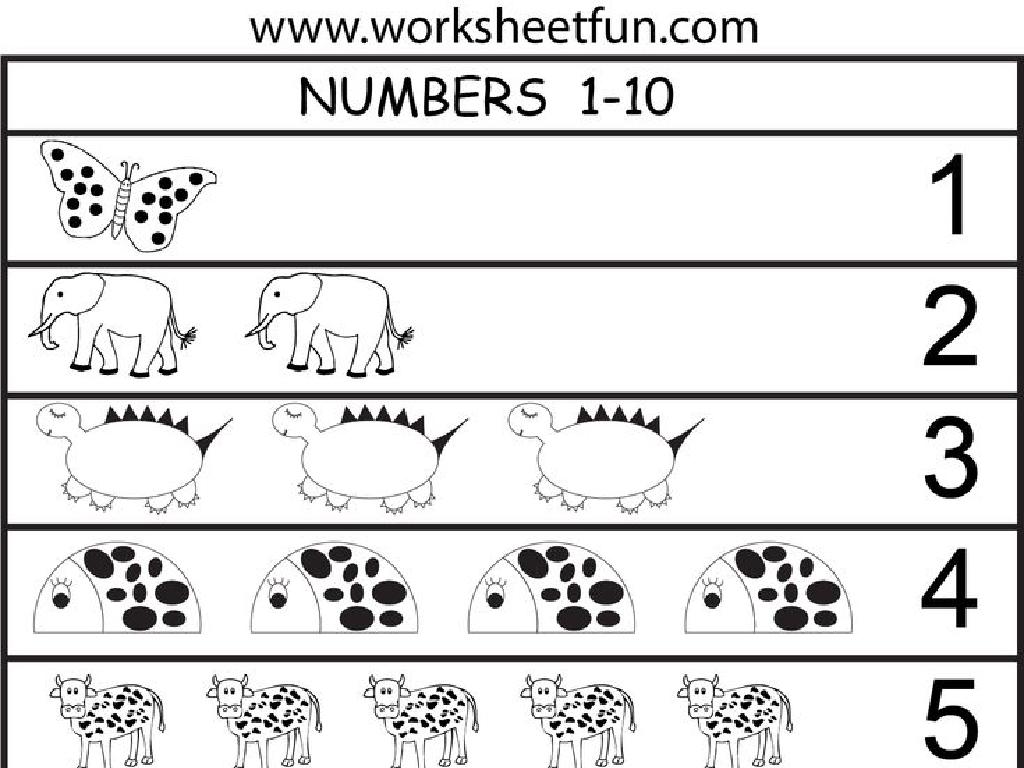Find Lengths And Measures Of Bisected Line Segments And Angles
Subject: Math
Grade: Eighth grade
Topic: Lines And Angles
Please LOG IN to download the presentation. Access is available to registered users only.
View More Content
Introduction to Lines and Angles
– Explore basic geometry concepts
– Define lines and angles
– Lines are straight with no curves, angles are formed when two lines meet
– Significance in geometry
– They are the foundation of geometric shapes and structures
– Bisecting lines and angles
– Bisecting creates two equal parts, crucial for constructions and proofs
|
This slide introduces the fundamental concepts of geometry, focusing on lines and angles, which are the building blocks of geometric study. Students should understand that lines are straight and extend infinitely in both directions, while angles are formed by the intersection of two lines. Emphasize the importance of lines and angles as they pertain to creating and understanding geometric shapes and solving problems. Introduce the concept of bisecting, which is the division of a line or angle into two equal parts, a common practice in geometric constructions and proofs. Encourage students to think about where they see lines and angles in real life and how bisecting might be used in practical situations.
Exploring Types of Angles
– Identifying angle types
– Angles are categorized by their measure
– Acute, Right, Obtuse, Straight
– Acute: 90°, Straight: 180°
– Real-life angle examples
– Door slightly ajar (acute), corner of a book (right), open scissors (obtuse), flat edge (straight)
– Angle types in bisected lines
– Bisected lines create two equal angles of any type
|
This slide introduces students to the fundamental types of angles they will encounter in geometry. Start by defining each type of angle: acute angles are less than 90 degrees, right angles are exactly 90 degrees, obtuse angles are greater than 90 degrees, and straight angles are 180 degrees. Provide real-life examples to help students visualize and relate to the concepts, such as a slightly open door representing an acute angle or the corner of a book as a right angle. Emphasize that bisected lines and angles result in two equal angles, which is a key concept when finding lengths and measures in bisected figures. Encourage students to find examples of these angles in the classroom or at home for a practical understanding.
Exploring Bisected Line Segments
– Definition of bisected line segments
– A line segment divided into two equal parts at its midpoint.
– Finding the midpoint
– Use the midpoint formula (x1+x2)/2, (y1+y2)/2 for coordinates.
– Real-life bisected segments
– Examples: roads split into equal lanes, pages divided by a fold.
|
This slide introduces the concept of bisected line segments, which is fundamental in understanding geometry. A bisected line segment is split into two equal parts at its midpoint. Teach students how to find the midpoint both visually and by using the midpoint formula for a line segment with given coordinates. Provide relatable examples such as a street divided into equal lanes or a piece of paper folded in half to illustrate bisected line segments in everyday life. Encourage students to think of other examples and to practice finding midpoints of various line segments.
Exploring Bisected Angles
– Definition of angle bisector
– A ray that divides an angle into two congruent angles
– Bisecting angles with tools
– Use a compass and straightedge for precise bisection
– Properties of angle bisectors
– Each point on the bisector is equidistant from the sides of the angle
– Angle bisectors in practice
– Solve problems using angle bisectors in geometric figures
|
Begin with the definition of an angle bisector, ensuring students understand it splits an angle into two equal parts. Demonstrate the method of bisecting an angle using a compass and straightedge, which is a fundamental skill in geometry. Discuss the properties of angle bisectors, emphasizing the concept of equidistance from the sides of the angle. Provide examples where angle bisectors are used to solve problems, such as finding unknown angle measures or lengths in geometric figures. Encourage students to practice bisecting angles and exploring the properties on their own.
Bisected Line Segments: Finding Lengths
– Use the midpoint formula
– Midpoint (M) = [(x1 + x2)/2, (y1 + y2)/2]
– Solve bisected segment problems
– Apply formula to find segment lengths
– Guided practice problem
– Example: Find length of bisected segment AB with endpoints A(2,3) and B(4,5)
|
This slide focuses on teaching students how to find the lengths of bisected line segments. Start by explaining the midpoint formula, which is used to find the exact middle point of a line segment. Then, demonstrate how to apply this formula in various problems involving bisected line segments. Provide a practice problem, such as finding the length of a bisected segment with given endpoints, and guide students through the solution step by step. Encourage students to practice this skill with additional problems to reinforce their understanding. Make sure to clarify that the midpoint formula is derived from averaging the x-coordinates and y-coordinates of the endpoints of the line segment.
Measuring Bisected Angles
– Use a protractor for angle measurement
– Place the protractor’s center at the angle’s vertex, aligning one ray with the baseline to read the angle.
– Calculate bisected angle measures
– A bisected angle is divided into two equal parts. To find the measure, divide the angle’s degree by two.
– Practice problem walkthrough
– Example: If a 60° angle is bisected, each new angle measures 30°.
|
This slide introduces students to the concept of measuring bisected angles, starting with the use of a protractor to measure the original angle accurately. Emphasize the correct placement of the protractor and how to read the scale. Then, explain that a bisected angle is split into two equal parts, and the measure of each new angle is half of the original. Provide a practice problem, such as bisecting a 60° angle, and guide students through the solution step by step. Encourage students to try bisecting different angles on their own to reinforce the concept.
Class Activity: Bisecting Lines and Angles
– Group task: Bisect a line segment
Use a ruler and compass to divide the line into two equal parts.
– Individual task: Bisect an angle
Use a protractor to ensure each angle is equal after the bisect.
– Measure and record your findings
– Present results to the class
Discuss how you achieved equal segments and angles.
|
This slide outlines a hands-on activity designed to help students understand the concept of bisecting lines and angles. Divide the class into small groups and provide them with rulers, compasses, and protractors. For the group activity, students will work together to bisect a line segment and measure the resulting segments to confirm they are equal. Individually, students will then bisect an angle and use a protractor to verify that the two angles are of equal measure. After completing the tasks, students will share their methods and results with the class, fostering a collaborative learning environment. As a teacher, circulate the room to assist and ensure accuracy. Possible variations for individual activities include bisecting different types of angles (acute, obtuse, right) to show that the bisecting process is consistent.
Review: Bisected Lines and Angles Q&A
– Recap on bisected segments
– A bisected segment is split into two equal parts
– Understanding angle bisection
– Angle bisection divides an angle into two equal angles
– Invite student questions
– Address doubts with examples
– Use examples to clarify doubts, e.g., bisecting a 60° angle results in two 30° angles
|
This slide is aimed at reviewing the concepts of bisected line segments and angles. Begin by summarizing the definition and properties of bisected line segments and angle bisection. Open the floor for students to ask any questions they may have about the topic, encouraging participation. Be prepared to clarify doubts; use the whiteboard to provide additional examples if necessary. For instance, if a student is unsure about how to find the length of a bisected line segment, demonstrate with a sample problem. This interactive session will help reinforce the students’ understanding and ensure they are well-prepared for upcoming assessments.
Homework: Bisecting Lines and Angles
– Practice bisecting lines and angles
– Complete the bisecting worksheet
Use the worksheet to apply what you’ve learned about bisecting lines and angles.
– Study for the upcoming quiz
The quiz will cover all topics related to lines and angles.
– Review today’s lesson
Go over your notes and any classwork from today to reinforce your understanding.
|
Students are tasked with practicing the bisecting of lines and angles to reinforce the day’s learning. They should complete the provided worksheet, which includes a variety of problems related to bisecting line segments and angles. Additionally, students should begin preparing for a quiz on lines and angles that will take place in the next class. Encourage them to review the material covered today, including any definitions, theorems, and examples discussed. Offer some tips for effective studying, such as creating study guides, flashcards, or forming study groups. Remind students that practice is key to understanding geometric concepts.





